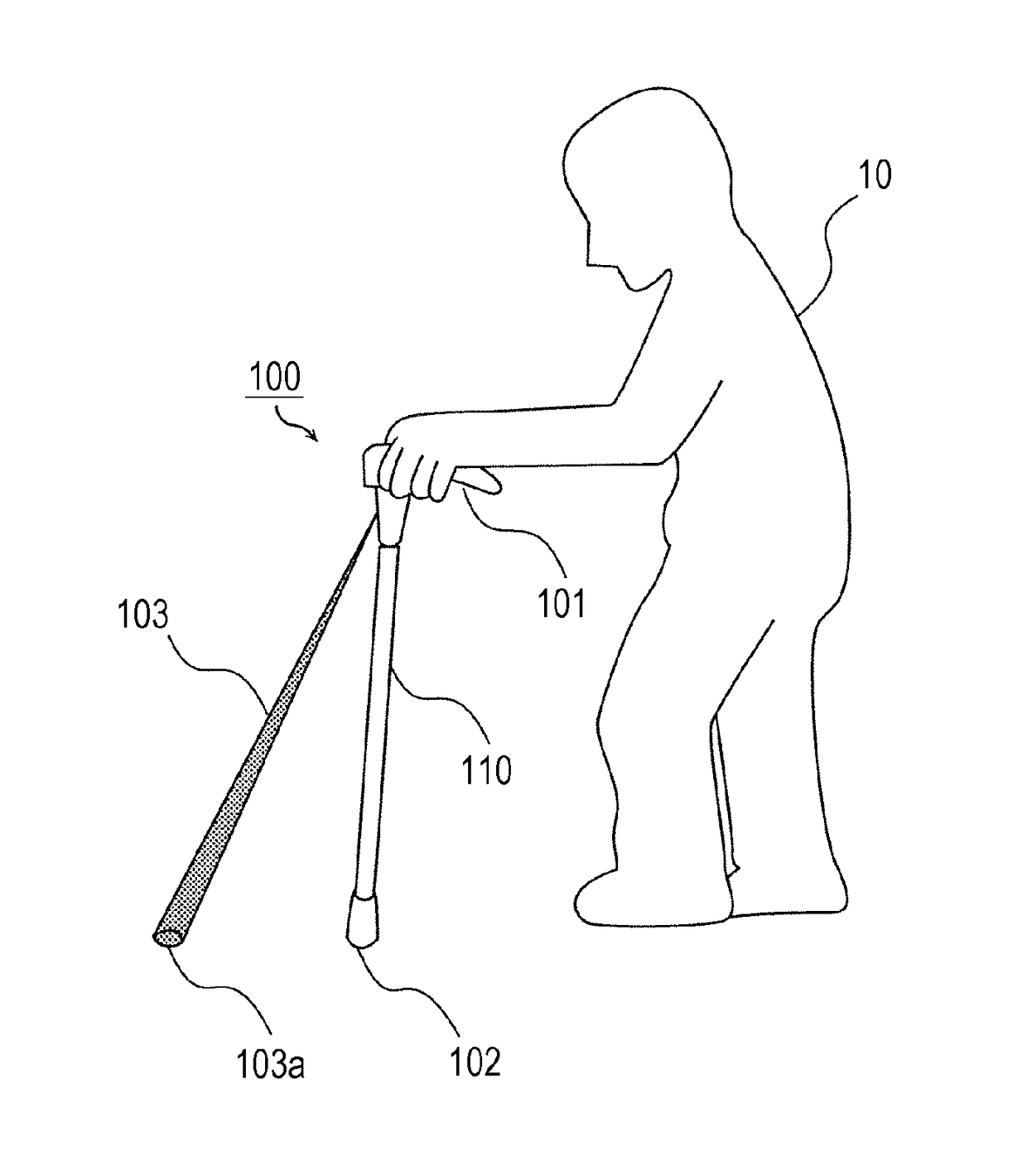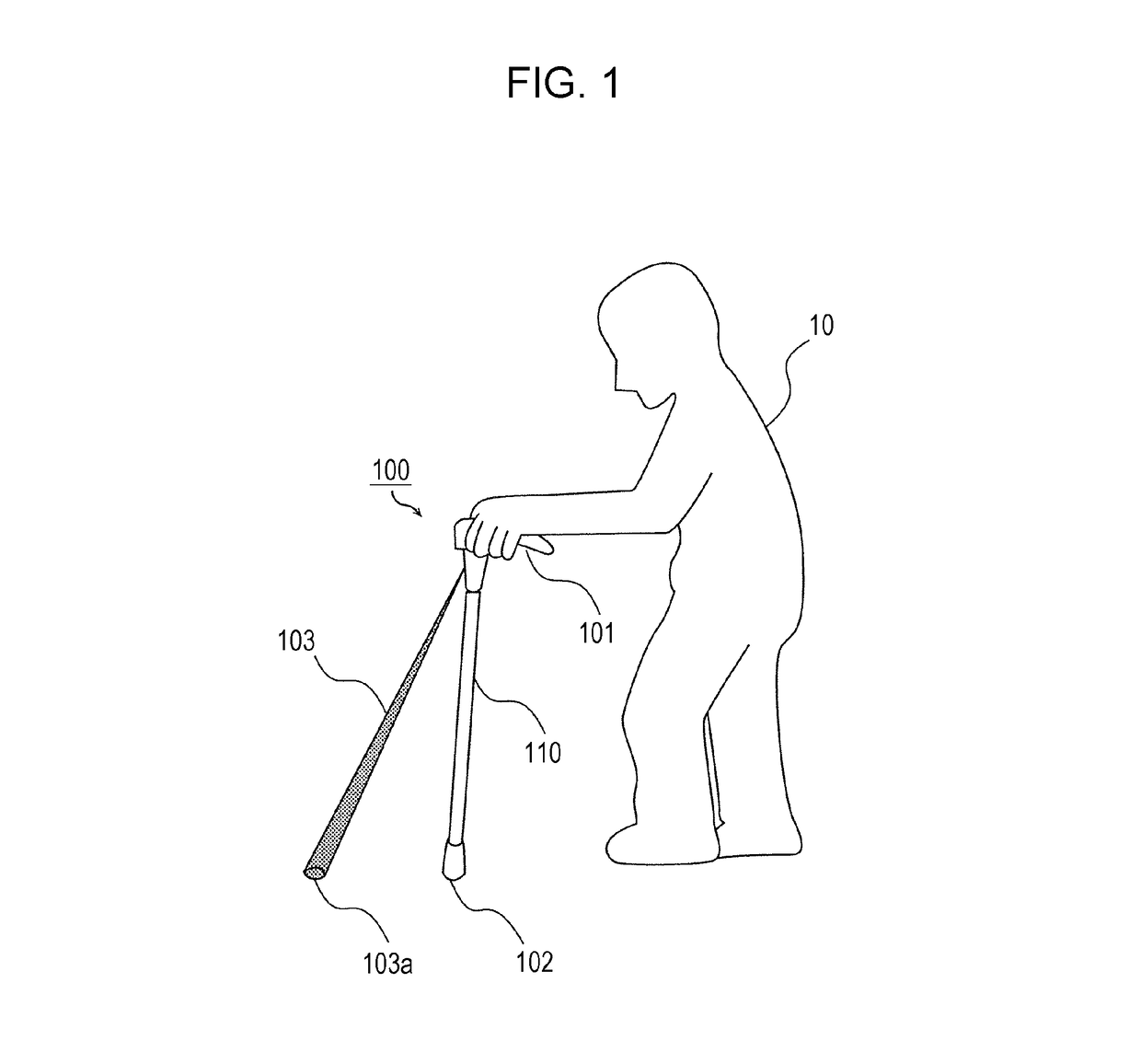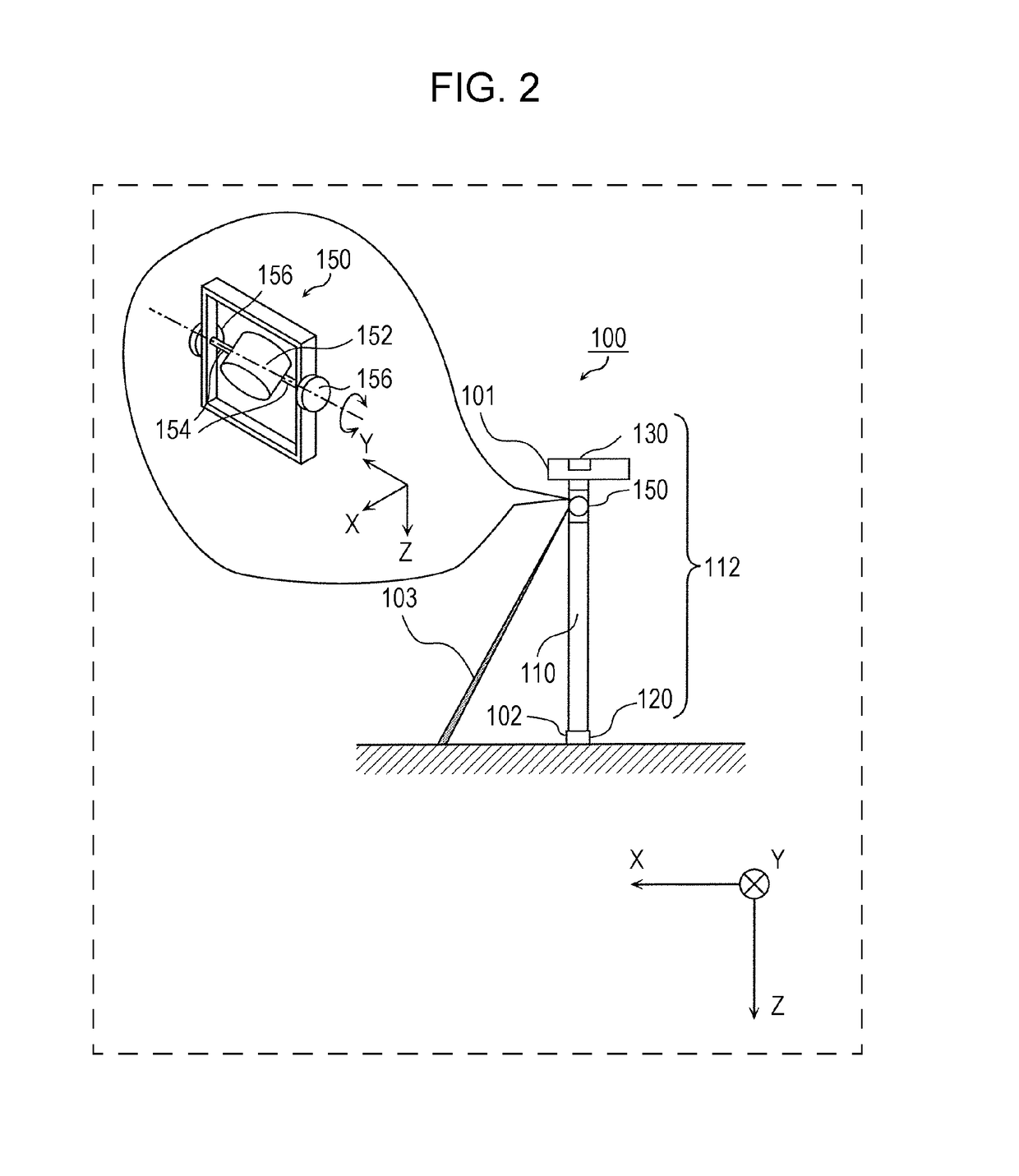Walking stick and walking assistance device
a technology of walking assistance and walking stick, which is applied in the direction of walking sticks, semiconductor devices for light sources, lighting and heating apparatus, etc., can solve the problems of reducing the walking function of users, increasing the risk of falling, and limiting the application of related art to providing assistance, so as to achieve the effect of assisting users' walking
- Summary
- Abstract
- Description
- Claims
- Application Information
AI Technical Summary
Benefits of technology
Problems solved by technology
Method used
Image
Examples
embodiment 1
[Usage Scenario of Walking Stick]
[0063]FIG. 1 illustrates a usage scenario of a walking stick according to Embodiment 1. As illustrated in FIG. 1, a user 10 grips a handle 101 of a walking stick 100 and walks while maintaining balance by thrusting the tip 102 of the main part 110 of the walking stick towards the ground. At this point, the walking stick 100 emits light 103 onto the ground, the light 103 indicating the next position at which the user 10 is to thrust the tip 102. The user 10 is able to maintain balance suitably while walking by subsequently thrusting the tip 102 of the walking stick 100 at a light emitting position 103a on the ground illuminated by the light 103.
[0064]Note that the ground herein means the surface that the user 10 is walking on, and is not limited to being the surface of land (earth's surface). The ground may also be a floor inside a building.
[Configuration of Walking Stick]
[0065]A configuration of such a walking stick 100 will be described specifically...
embodiment 2
[0105]Next, Embodiment 2 will be described. In Embodiment 2, one example of a method of deciding the standard light emitting angle stored in the light emitting angle storage 146 in Embodiment 1 will be described in detail. Note that since the configuration of the walking stick according to the present embodiment is substantially the same as the walking stick according to Embodiment 1, illustration and description will be reduced or omitted.
[Operation of Walking Stick]
[0106]FIG. 9 is a flowchart illustrating a process of deciding the standard emitting angle of the walking stick according to Embodiment 2. The process in FIG. 9 is conducted before the walking aid process in FIG. 5.
[0107]First, the emitting controller 144 selects an unselected candidate from among multiple predetermined standard light emitting angle candidates (S11). The angles used as the multiple standard light emitting angle candidates may be multiple angles (for example, 5 degrees, 10 degrees, 15 degrees, 20 degrees...
embodiment 3
[0116]Next, Embodiment 3 will be described. In the present embodiment, a fall by the user is detected, the evaluation score of walking balance stability from when the fall was detected is stored, and this evaluation score is used as the threshold value of the balance evaluation (S30 in FIG. 5).
[0117]Since the configuration of the walking stick according to the present embodiment is substantially the same as the walking stick according to Embodiment 1, illustration and description will be reduced or omitted.
[Operation of Walking Stick]
[0118]FIG. 10 is a flowchart illustrating a process of updating a threshold value for balance evaluation according to Embodiment 3.
[0119]First, the balance evaluator 142 detects a fall by the user 10 (S21). Specifically, the balance evaluator 142 detects a fall based on the acceleration or the angular velocity obtained from the sensor 130, for example. Since the main part 110 turns over suddenly during a fall, the sensor values vary more greatly than wh...
PUM
 Login to View More
Login to View More Abstract
Description
Claims
Application Information
 Login to View More
Login to View More - R&D
- Intellectual Property
- Life Sciences
- Materials
- Tech Scout
- Unparalleled Data Quality
- Higher Quality Content
- 60% Fewer Hallucinations
Browse by: Latest US Patents, China's latest patents, Technical Efficacy Thesaurus, Application Domain, Technology Topic, Popular Technical Reports.
© 2025 PatSnap. All rights reserved.Legal|Privacy policy|Modern Slavery Act Transparency Statement|Sitemap|About US| Contact US: help@patsnap.com



